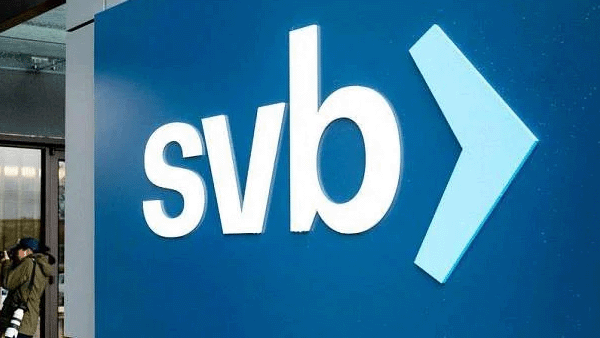The Weakest Link: Third-party Risk and its Impact on your Wealth

You may have recently heard about the downfall of Silvergate and Silicon Valley Bank, the depegging of the stablecoin USDC from the dollar, or the seizure of Signature Bank by US regulators. While these events may seem exclusive to the cryptocurrency market, it is important to recognize their potential implications for other asset classes.
Even if you are not interested in crypto, it is essential to understand the underlying factors that contribute to such market turbulence, as they may signal broader systemic risks that could impact your investments.
Risks from Counterparty Failures Spread Quickly
The recent events are exposing the third-party risks, consequences, and ripple effects that cause seemingly unrelated parties to fail and pose real dangers of a bank failure. It also reveals how the financial industry’s complex web of counterparties can trigger a bank’s downfall, creating a domino effect that ripples throughout the banking system.
Silvergate and Signature Bank were the two most bitcoin-friendly banks supporting the bulk of the fiat settlement for bitcoin transactions between trading counterparties in the U.S. through the Silvergate Exchange Network (SEN) and Signature’s Signet. Circle, Coinbase, and many crypto trading firms relied on Signet for their real-time payments.
Circle, the issuer of the leading stablecoin and fifth largest cryptocurrency USDC, confirmed on Saturday that $3.3 billion of its $40 billion reserves are in the collapsed Silicon Valley Bank ($SIVB).
Following Signature Bank's seizure by U.S. regulators, crypto brokerage firm Paxos has revealed it currently holds $250 million at Signature, while Coinbase had $240 million with the same bank.
The sudden collapse of both banks in less than a week has left a key part of the crypto industry's backend infrastructure in limbo. You can imagine how the financial contagion can spread here on to the rest of the financial industry.
SVB's failure occurred because a small but wealthy group of depositors decided to withdraw their funds, and when the bank could not fulfill the withdrawals on a timely basis, a full bank run ensued.
Such bank runs can occur because the majority of customer deposits are invested by banks, leaving only a small portion available to cover withdrawals. One of SVB's insolvency ripples, USDC, was selling as low as 86 cents on the dollar, with its future uncertain. A potential USDC failure would cause a whole series of additional third-party bankruptcies. It is also very likely that many startups will be dragged into the SVB abyss.

SVB, the largest bank by deposits in Silicon Valley, failed on 10 Mar 2023.
Minimizing Counterparty Risks is Key to Wealth Protection
The lessons I see again and again from all these is that our banking system is overleveraged, opaque, and dangerously interdependent.
If you entrust your wealth to a counterparty, you are subject not just to that party’s continued solvency but to all third parties on which it depends. Thus, the weakest link in the counterparty chain determines its resilience, or lack thereof, in a crisis.
Point in case--US banks have over $620 billion in unrealized losses according to the FDIC, nearly 50% of all venture capital-backed startups in the US had exposure to SVB, and the troubled crypto lender BlockFi left $227 million in an SVB mutual fund.
Silver Bullion, a Single Strong Counterparty
We have made it our mission to manage and store wealth securely for many generations to come. This is the primary reason that we don’t rely on third parties and have insourced both vaulting (The Safe House) and facilities (The Reserve). By reducing the counterparty chain to a single element, we eliminate third-party counterparty risk, so clients only need to do due diligence on us.
Unlike financial institutions’ deposits that are mere liabilities owed to creditors, our customers’ gold and other metals are sold via invoices. This removes the assets from our balance sheet, transfers their ownership to the client, and relegates us to a service agent to the client, offering storage, insurance, liquidity, and collateralization options. This ensures clients’ bullion is held as privately owned property under exclusive Singapore jurisdiction.
Under Singapore’s stringent criminal code, leveraging somebody else’s property— the cause of bank runs—for our own purposes could be criminally prosecuted. Therefore, by design, 100% of our customer’s bullion is always present, can never be encumbered by us, nor could it be claimed by creditors.
Third-party quarterly audits, customer audits, and insurance audits, as well as our parcel ownership list with photos for each parcel, provide transparency. Should anything go amiss, our 800 million SGD any-one loss insurance covers theft, infidelity of employees, and mysterious disappearances.
We have created this dependable, transparent, and financially independent wealth protection service to protect you—above all interests—from systemic crises. Consider it your backup plan far away from home, which will be there when crises hit home.
For you to sleep soundly, we recommend storing a part of your wealth with minimal exposure to third-party risk in a stable asset like gold or silver in Singapore's safe jurisdiction because failures in the complex and interconnectedness of today's financial system can result in mainstream assets losing their value overnight.
